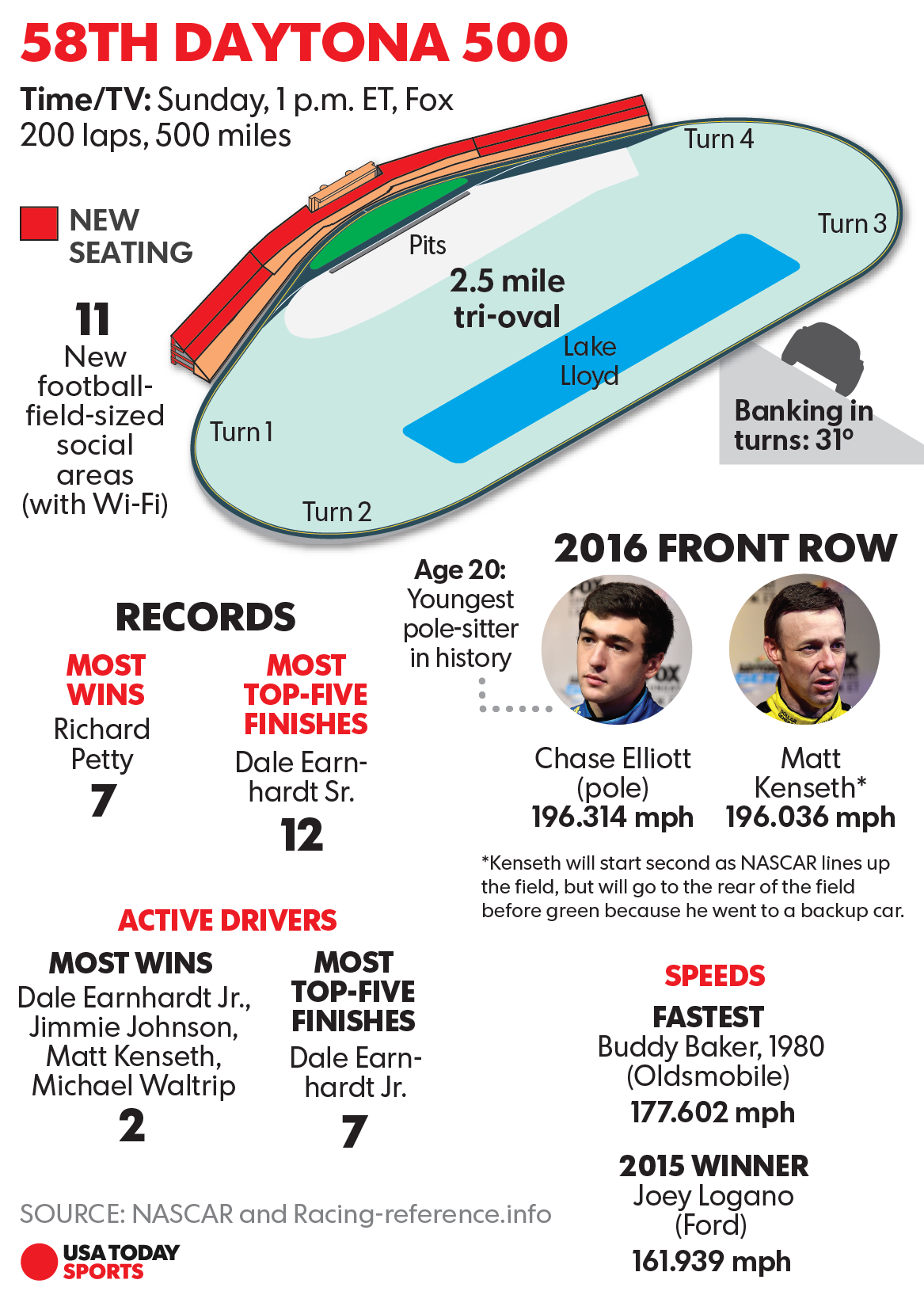Gluck: Plate-racing masters make fluke winners less likely at Daytona

DAYTONA BEACH, Fla. — As recently as two years ago, drivers showed up at the Daytona 500 believing nearly any of them could win it.
They called it Powerball, a crapshoot, random. Underdogs had just as good of a chance to win as a future Hall of Famer.
That’s not the case anymore. To win a restrictor-plate race like the Daytona 500, a certain expertise is required.
“If you look at the recent winners of speedway races, they’re all good at this,” defending 500 winner Joey Logano. “It’s not a total crapshoot. Not anyone can just go out and win these things anymore, in my opinion. It’s challenging to get up there.”
Gluck: Will runner-up jinx continue with new rules package?
Just look at any recent plate race and you’ll see the race leader out front, moving back and forth to block both lanes. Lap after lap, the leader can maintain his position by taking the air off one lane, then moving to the other — thus stalling out any potential run that would catch him.
Logano explained it like this: When drivers get behind another car, there’s a bubble of air in front of them. As they get closer, the bubble squishes but doesn't pop; instead, it seems to boost the front car further ahead.
It can be negated by pulling out of line to get clean air on the car’s nose. But when that happens, the air creates drag and stops any momentum unless there’s a car physically pushing from behind.
That's a problem, and it creates a giant game of chess at 200 mph.
“You’ve got to have a ginormous run to get next to ‘em,” Logano said. “You’ve got to get a physical push, but it takes a lot for the car behind you to get to your bumper, because he’s got the same bubble behind you that you’re working with.”
Sound complicated? It is. And that’s exactly why it’s not a wide-open race these days.
PHOTOS: History of the Daytona 500

Two-time Daytona 500 winner Michael Waltrip said it's safe to pick favorites for the race again without making a total guess. Dale Earnhardt Jr. is tops on the list, but Logano, Denny Hamlin and Matt Kenseth are among the other top threats.
“It just seems to be more predictable now that a handful of guys are going to win this race than ever before,” Waltrip said.
Hamlin said the list of recent restrictor-plate victors shows enough repetition that it can’t just be coincidence. After all, he said, “We’re not the luckiest guys in Vegas."
In the last two years, Earnhardt won three restrictor-plate races plus a Daytona Duel (he added another Thursday night). Hamlin won a Talladega race, duel and the Sprint Unlimited; Logano the Daytona 500 plus a Talladega race and Kenseth an Unlimited and a duel.
That’s not a fluke.
“When it comes to a lottery, you don’t have the same person who wins the big Powerball over and over,” Brian Scott said. “We have a lot of similar winners.”
Digital dashboards aim to improve racing for NASCAR drivers ... and fans
It’s still not as much in the drivers’ control as some races, and what makes it that way are the big crashes. Drivers can still get caught in someone else’s mess and be taken out by an incident not of their own doing, which could eliminate enough contenders for a surprise winner.
But having a fast car matters more than before at Daytona. So does track position, strategy and being able to “block your butt off,” as Waltrip said.
“(Fast cars) can stay out in front of the pack if somebody doesn’t get a massive run they can’t predict or see coming,” Regan Smith said. “It makes it tougher to have a darkhorse end up in the front.
"That said, it’s still plate racing. As soon as the leaders get side-by-side, then all bets are off at that point.”
Follow Gluck on Twitter @jeff_gluck
